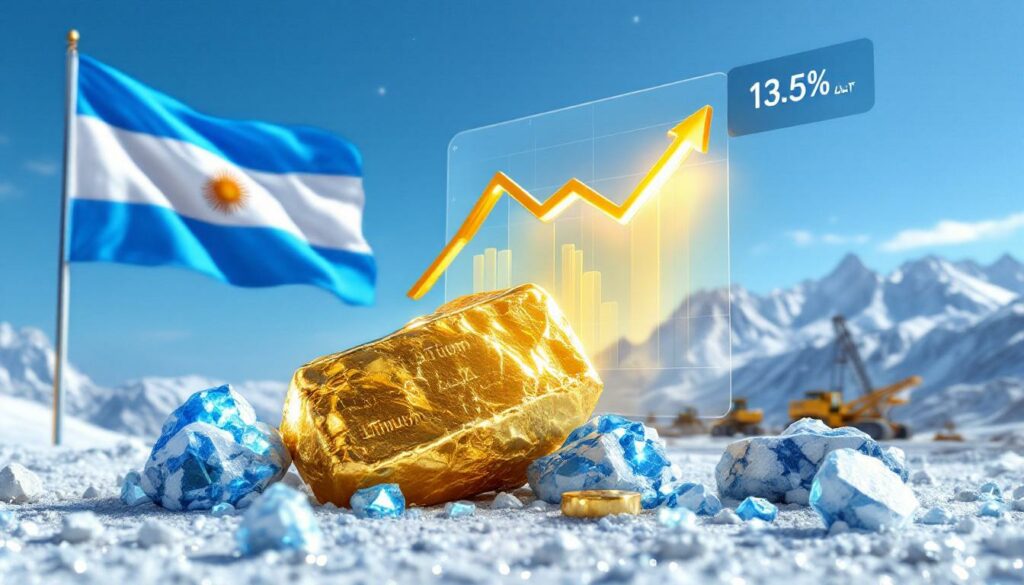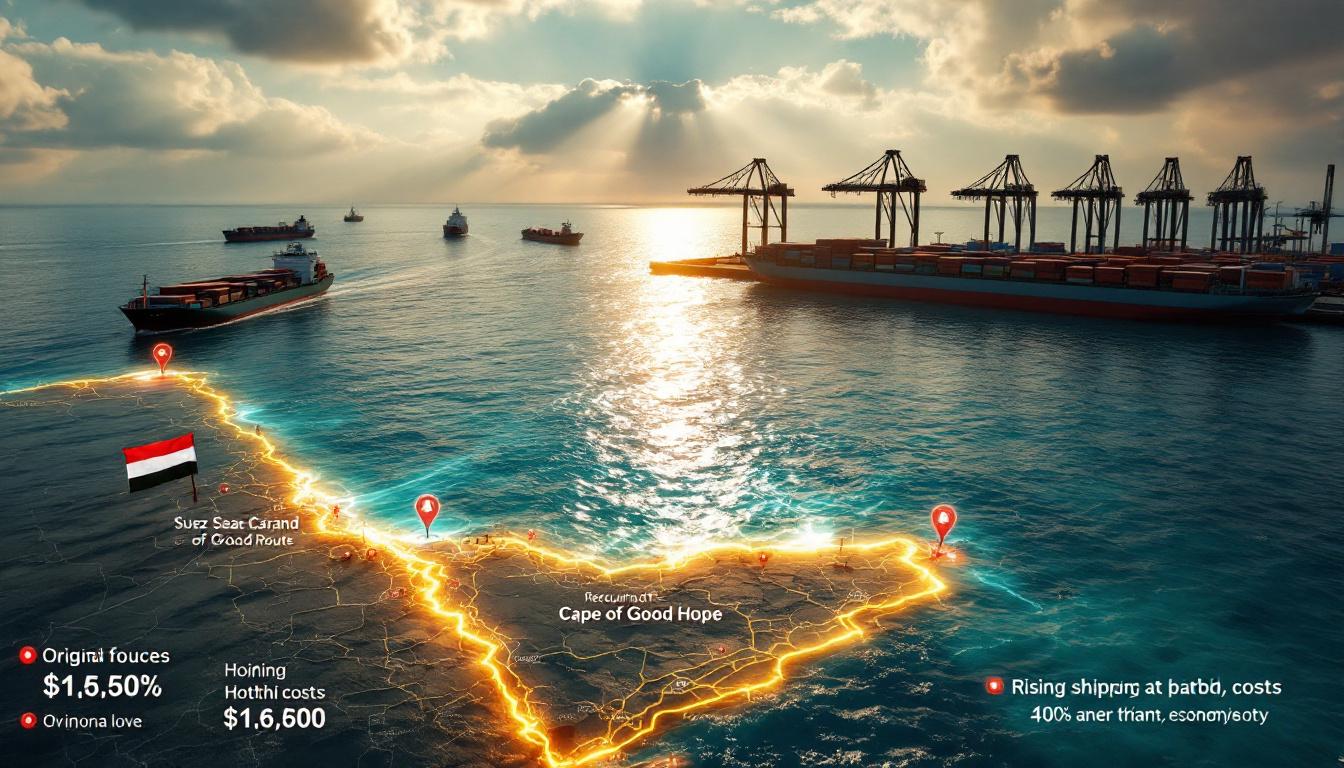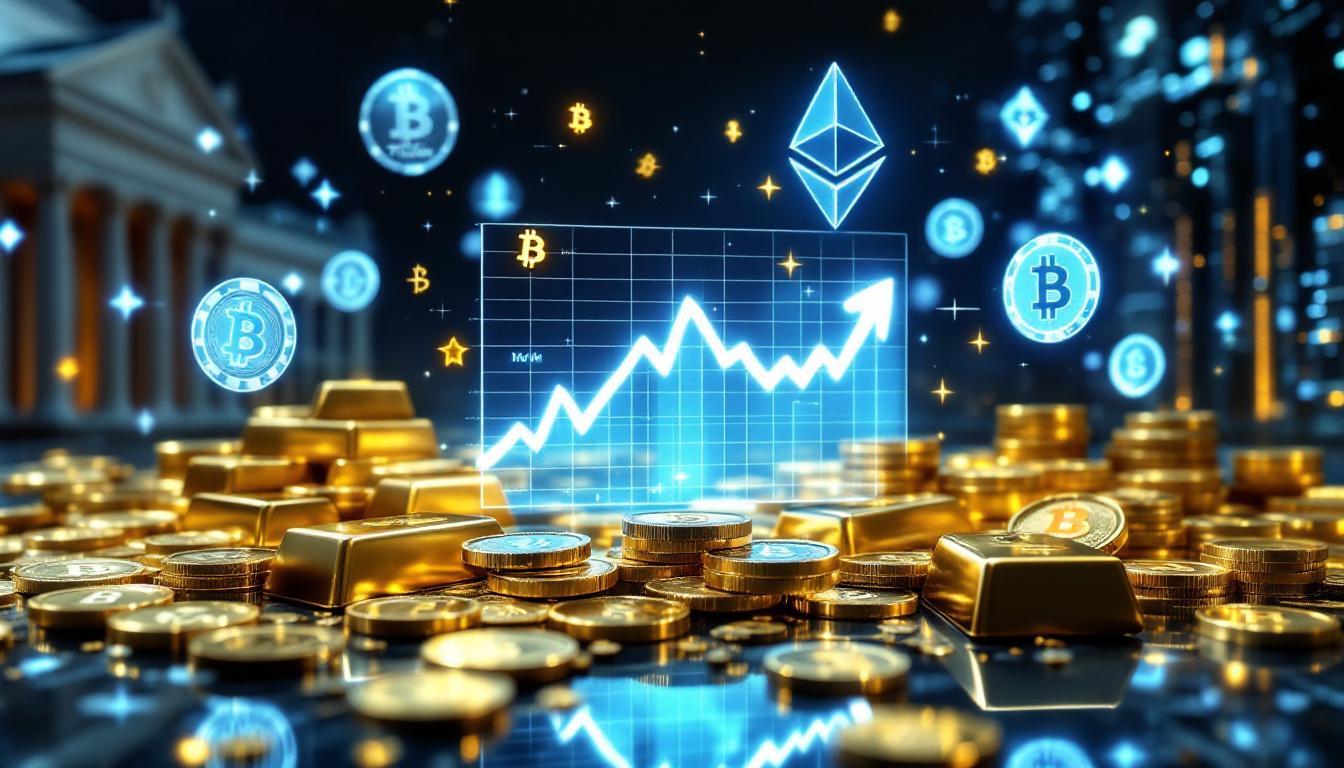Argentina's Mining Exports in 2025: Growth Amid Lithium Market Challenges
Argentina's mining sector is poised for significant export growth in 2025, with projected figures expected to exceed $5 billion despite ongoing challenges in the lithium market. This growth represents a substantial increase from the $4.6 billion recorded in 2024, highlighting the resilience and diversification strategies that characterize Argentina's evolving mining industry.
The impressive growth trajectory comes at a time when global commodity markets are experiencing divergent trends, with precious metals showing strength while battery metals like lithium face significant headwinds. This dichotomy has created both challenges and opportunities for Argentina's mining sector, which continues to attract international investment despite market volatility.
What is driving Argentina's mining export growth in 2025?
The primary driver behind Argentina's mining export growth is the robust performance of its precious metals sector, particularly gold and silver. According to data from the National Mining Secretariat, gold contributed a remarkable $3.14 billion (68% of total mining exports) in 2024, while silver accounted for $641 million (14%). These figures underscore the critical importance of precious metals to Argentina's mining economy.
Roberto Cacciola, president of the Argentine Chamber of Mining Companies (CAEM), has expressed optimism about the sector's performance in 2025, stating, "This year mining exports could be above $5 billion or $5.2 billion." This projection represents an approximate 10% increase from 2024 levels, demonstrating the sector's growth potential despite global economic uncertainties.
The price environment for precious metals has been particularly favorable, with gold consistently trading at record gold prices analysis and silver showing strong performance. These elevated prices are providing a crucial buffer against the challenges facing other segments of Argentina's mining industry, most notably lithium.
Key export projections for 2025
- Total mining exports: $5-5.2 billion (up from $4.6 billion in 2024)
- Gold contribution: Expected to remain the dominant export commodity despite potential volume decreases
- Silver exports: Projected to maintain significant market share with price appreciation offsetting production plateaus
- Lithium exports: Expected to increase in volume but face continued price pressures, likely maintaining similar export values to 2024
The diversification across multiple minerals provides Argentina's mining sector with resilience against market volatility, allowing continued growth even as specific commodities face challenging market conditions.
How are precious metals offsetting lithium's market struggles?
The contrasting fortunes of precious metals and lithium highlight the importance of Argentina's diversified mining portfolio. While lithium prices have collapsed by over 90% since 2023, gold and silver have demonstrated remarkable price strength, creating a natural hedge within the country's mining sector.
Gold and silver market dynamics
Gold and silver continue to be Argentina's primary mining exports, with their rising prices compensating for potential production decreases. In 2024, these precious metals dominated the export landscape:
- Gold: $3.14 billion (68% of total mining exports)
- Silver: $641 million (14% of total mining exports)
The strength in precious metals pricing comes amid global economic uncertainty, inflation concerns, and geopolitical tensions that have historically supported gold and silver as safe-haven assets. Silver prices have been particularly strong, with futures trading at $37.965 per ounce as of July 2025, according to market data from MINING.COM.
Production vs. price trends
While production volumes for gold and silver are expected to remain stable or slightly decrease due to maturing mining projects, the increasing commodity prices are projected to more than offset any reduction in output. This creates a favorable dynamic where declining production does not necessarily translate to declining revenue.
As Cacciola explains, "In gold and silver, we see perhaps a small reduction [in volume], but rising prices will make up for lower volumes." This price-driven growth is particularly important for operations in provinces like Salta, where some mines are reaching maturity and experiencing production plateaus.
The ability of precious metals to maintain or increase their export value despite production challenges demonstrates the sector's resilience and highlights the importance of market diversification in Argentina's mining strategy.
What challenges is Argentina's lithium sector facing?
Despite Argentina's position as part of the "lithium triangle" alongside Chile and Bolivia, the country's lithium sector is navigating significant headwinds that threaten to undermine its growth trajectory.
Current lithium market conditions
The lithium industry is experiencing unprecedented market pressures that are affecting Argentina's export potential:
- Price collapse: Over 90% price decline since 2023
- Supply-demand imbalance: Significant oversupply from China coupled with reduced electric vehicle demand
- Operational challenges: Many companies operating at break-even or deficit levels
- Investment hesitancy: Dramatic shift from expansion to survival mode
The severity of the price decline has forced a fundamental reassessment of lithium projects throughout Argentina, with companies prioritizing operational efficiency over growth initiatives.
Lithium export performance
Despite being the world's fourth-largest lithium exporter and part of the prestigious "lithium triangle," Argentina's lithium sector contributed $631 million (13.6%) to mining exports in 2024. While production volumes are expected to increase in 2025, falling prices will likely keep export values similar to 2024 levels.
"Lithium companies are currently working to break even, or some may be running at a deficit. This is expected to be temporary, but it's a fact of life." — Roberto Cacciola, CAEM President
This challenging environment has created a stark contrast with the euphoria that characterized the lithium market in 2022-2023, when prices reached historic highs and companies aggressively pursued expansion opportunities. The current market reality has necessitated a strategic pivot toward operational sustainability rather than growth.
How is government policy supporting mining investment?
Argentina's government under President Javier Milei has implemented targeted policies designed to stimulate investment in the mining sector, recognizing its strategic importance to the country's economic development and export growth.
The Large Investment Incentive Regime (RIGI)
The most significant policy initiative is the Large Investment Incentive Regime (RIGI), which offers substantial benefits to qualifying mining projects:
- Tax advantages: Favorable corporate tax treatment for qualifying investments
- Customs benefits: Import duty reductions for major mining projects
- Exchange rate incentives: Special financial terms for investments exceeding $200 million
- Long-term stability: Enhanced regulatory certainty for major projects
These incentives are specifically designed to attract large-scale international investment in Argentina's mining sector, with a particular focus on projects that could significantly boost export volumes and values.
Current RIGI implementation status
The program has attracted significant interest from mining companies operating in Argentina, though approval has been selective:
- Seven mining projects have formally applied for RIGI benefits
- Only Rio Tinto's Rincon project ($2.7 billion lithium carbonate plant in Salta province) has received approval to date
- Deadline for project submissions currently set for July 8, 2026
- Industry leaders expect the deadline to be extended
"The RIGI is running. I think it's going to be extended, it's planned. In other words, I don't see any impediment to it being extended." — Roberto Cacciola, CAEM President
The selective approval process reflects the government's focus on projects with transformative potential for Argentina's mining sector, with the Rio Tinto Rincon project representing a substantial investment in the country's lithium industry despite current market challenges.
What is the outlook for Argentina's copper mining sector?
While gold, silver, and lithium dominate current headlines, Argentina's copper sector represents a significant growth opportunity that could reshape the country's mining landscape in the coming years.
Copper project development
Argentina possesses world-class copper deposits that remain largely undeveloped but show promising potential for future development:
- Multiple copper projects are preparing RIGI applications pending regulatory clarifications
- McEwen Copper's Los Azules project is currently the only copper venture that has formally applied for RIGI benefits
- Copper prices have shown resilience, with futures trading at $5.481 per pound as of July 2025
The development of these copper resources represents a strategic priority for Argentina's mining sector, with significant potential to diversify the country's mineral exports beyond the current focus on gold, silver, and lithium.
Strategic importance
Copper development represents a critical diversification opportunity for Argentina's mining sector, potentially reducing dependence on lithium and precious metals while capitalizing on growing global copper supply forecast for copper in renewable energy and electric vehicle applications.
According to Cacciola, copper projects are "all ready to be submitted; they're just waiting for some definitions" regarding regulatory frameworks. This suggests that once these regulatory clarifications are provided, there could be a significant increase in copper project submissions under the RIGI program.
The strategic importance of copper is further enhanced by its critical role in the global energy transition, with demand expected to increase substantially as renewable energy and electric vehicle adoption accelerates worldwide.
How has the lithium price collapse affected investment timelines?
The dramatic decline in lithium prices has forced a fundamental reassessment of investment priorities throughout Argentina's lithium sector, with companies shifting from aggressive expansion to operational sustainability.
Investment delays and strategic shifts
The lithium price collapse has forced companies to recalibrate their investment strategies:
- Expansion projects have been postponed or canceled
- Capital expenditure has been redirected toward operational efficiency
- Focus has shifted from growth to survival and sustainability
- Market euphoria of 2022-2023 has been replaced by cautious pragmatism
These strategic shifts reflect the severity of the market downturn and the need for lithium producers to adapt to a fundamentally changed pricing environment. While lithium demand is expected to recover in the medium to long term, the current market reality necessitates a more conservative approach to investment.
Industry expert perspective
According to Roberto Cacciola, the lithium industry is undergoing a fundamental reset that has altered investment timelines throughout the sector:
"Everyone was thinking about expanding, about growing, and now they're thinking about surviving. Some expansions have been delayed. The reality is that we're not coming back with the euphoria of 2022-2023, because the drop (in prices) was very sharp."
This assessment highlights the dramatic shift in market sentiment and investment priorities within Argentina's lithium sector. Projects that were economically viable at 2022-2023 prices are being reassessed under current market conditions, leading to significant delays in expansion plans.
Despite these challenges, Argentina remains committed to developing its lithium resources, recognizing their strategic importance to the global energy transition and the country's long-term economic development.
What is the future outlook for Argentina's mining sector?
Argentina's mining sector faces both challenges and opportunities as it navigates evolving market conditions and regulatory frameworks. The sector's future will be shaped by its ability to capitalize on its diverse mineral resources while adapting to changing global demand patterns.
Short-term projections (2025-2026)
The immediate outlook for Argentina's mining sector is characterized by:
- Gold and silver continuing to drive export growth, supported by favorable price environments
- Lithium production increasing despite price challenges, with export values remaining similar to 2024 levels
- Government likely to extend RIGI deadline beyond the current July 8, 2026 date
- Copper projects advancing through regulatory processes, potentially leading to new project approvals
These trends suggest a period of consolidation and strategic positioning rather than dramatic export growth, with the sector focusing on building foundations for future expansion while navigating current market challenges.
Long-term potential
Argentina's mining sector shows significant long-term potential due to several fundamental advantages:
- Resource diversity: World-class deposits across multiple mineral categories
- Strategic position: Key member of the lithium triangle with vast undeveloped reserves
- Policy framework: Government commitment to creating favorable investment conditions
- Market alignment: Strong positioning in minerals critical to the global energy transition
These advantages position Argentina to benefit from growing global demand for both traditional mining outputs like gold and silver and transition minerals like lithium and copper. The country's ability to attract mining investment opportunities will be critical to realizing this potential, making the success of initiatives like the RIGI program particularly important.
FAQ: Argentina's Mining Sector in 2025
How significant is mining to Argentina's economy?
Mining represents a crucial export sector for Argentina, generating over $4.6 billion in 2024 and projected to exceed $5 billion in 2025. The industry is particularly important for the country's foreign exchange earnings and regional economic development, especially in northern provinces like Salta, where mining operations provide significant employment and economic activity.
While mining represents a smaller percentage of Argentina's GDP compared to sectors like agriculture, its contribution to export revenues and foreign investment makes it strategically important to the country's economic development.
Which companies are the major players in Argentina's mining sector?
Key companies operating in Argentina's mining sector include Rio Tinto (developing the $2.7 billion Rincon lithium project), McEwen Copper (advancing the Los Azules copper project), and various gold and silver producers that collectively generate over 80% of the country's mining exports.
The sector has attracted significant international investment, with companies from Canada, Australia, China, and the United States playing important roles in developing Argentina's mineral resources. This international participation brings critical capital, technology, and expertise to Argentina's mining industry.
How does Argentina compare to other lithium-producing nations?
Argentina ranks as the world's fourth-largest lithium exporter and forms part of the "lithium triangle" with Chile and Bolivia, which collectively hosts the world's largest lithium reserves. While Chile currently leads in production, Argentina has significant growth potential due to its vast undeveloped resources.
Argentina's competitive position in global lithium markets is supported by favorable geology, improving regulatory frameworks, and growing international investment. Despite current price challenges, the country's Argentina lithium insights sector remains strategically important to global supply chains for battery materials.
What impact will the RIGI program have on Argentina's mining industry?
The RIGI program is expected to accelerate mining investment by providing significant tax, customs, and exchange rate benefits for projects exceeding $200 million. Industry experts anticipate the program will particularly benefit copper project development while helping lithium producers weather current market challenges.
The selective approval process for RIGI benefits suggests that the government is prioritizing transformative projects with substantial export potential, potentially reshaping Argentina's mining landscape over the medium to long term.
How are global commodity price trends affecting Argentina's mining outlook?
Rising gold and silver prices are offsetting challenges in the lithium sector, where prices have fallen by over 90% in two years. This price divergence highlights the importance of Argentina's diverse mining portfolio, which provides resilience against volatility in individual commodity markets.
The contrasting price trends for precious metals and lithium demonstrate the value of resource diversity in Argentina's mining strategy, allowing the sector to maintain export growth despite significant challenges in specific commodity markets. Additionally, lithium industry innovations continue to impact market dynamics across the global mining landscape.
Ready to Profit from the Next Major Mining Discovery?
Instantly gain a market-leading edge with Discovery Alert's proprietary Discovery IQ model, which delivers real-time notifications on significant ASX mineral discoveries and turns complex data into actionable investment insights. Explore historic examples of exceptional investment returns by visiting the Discovery Alert discoveries page and position yourself ahead of the market.




